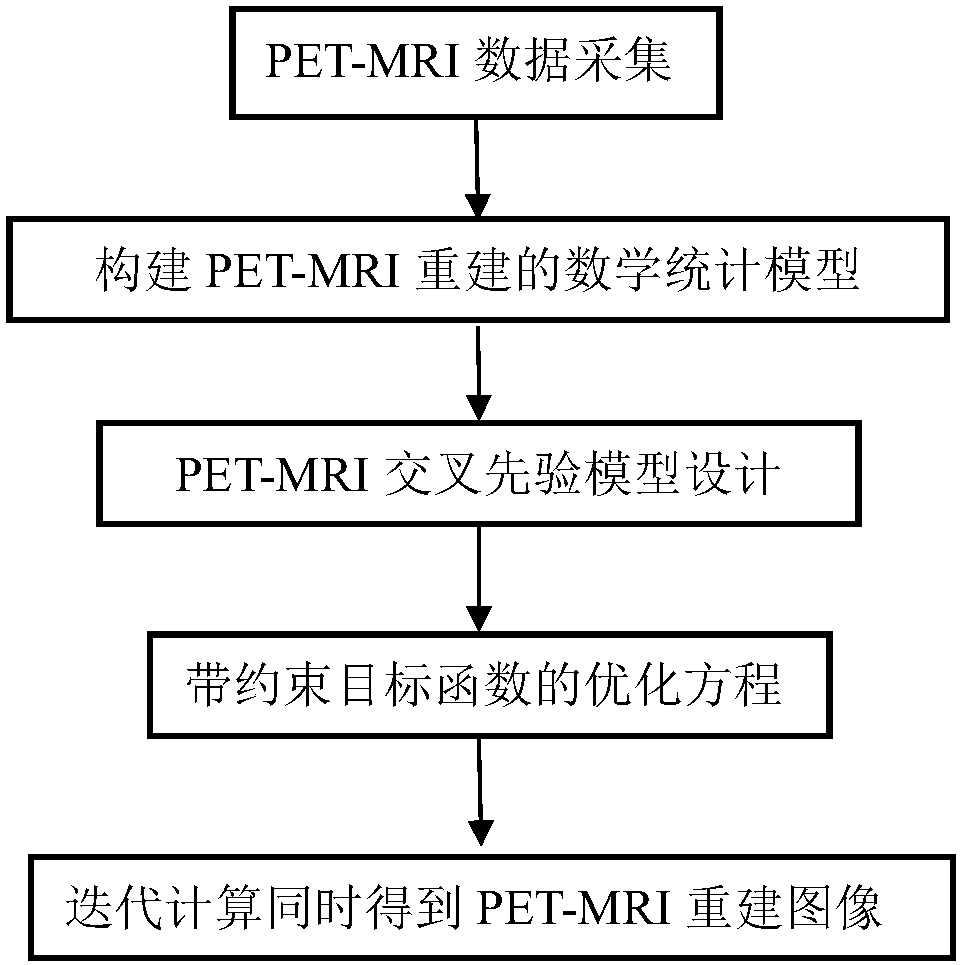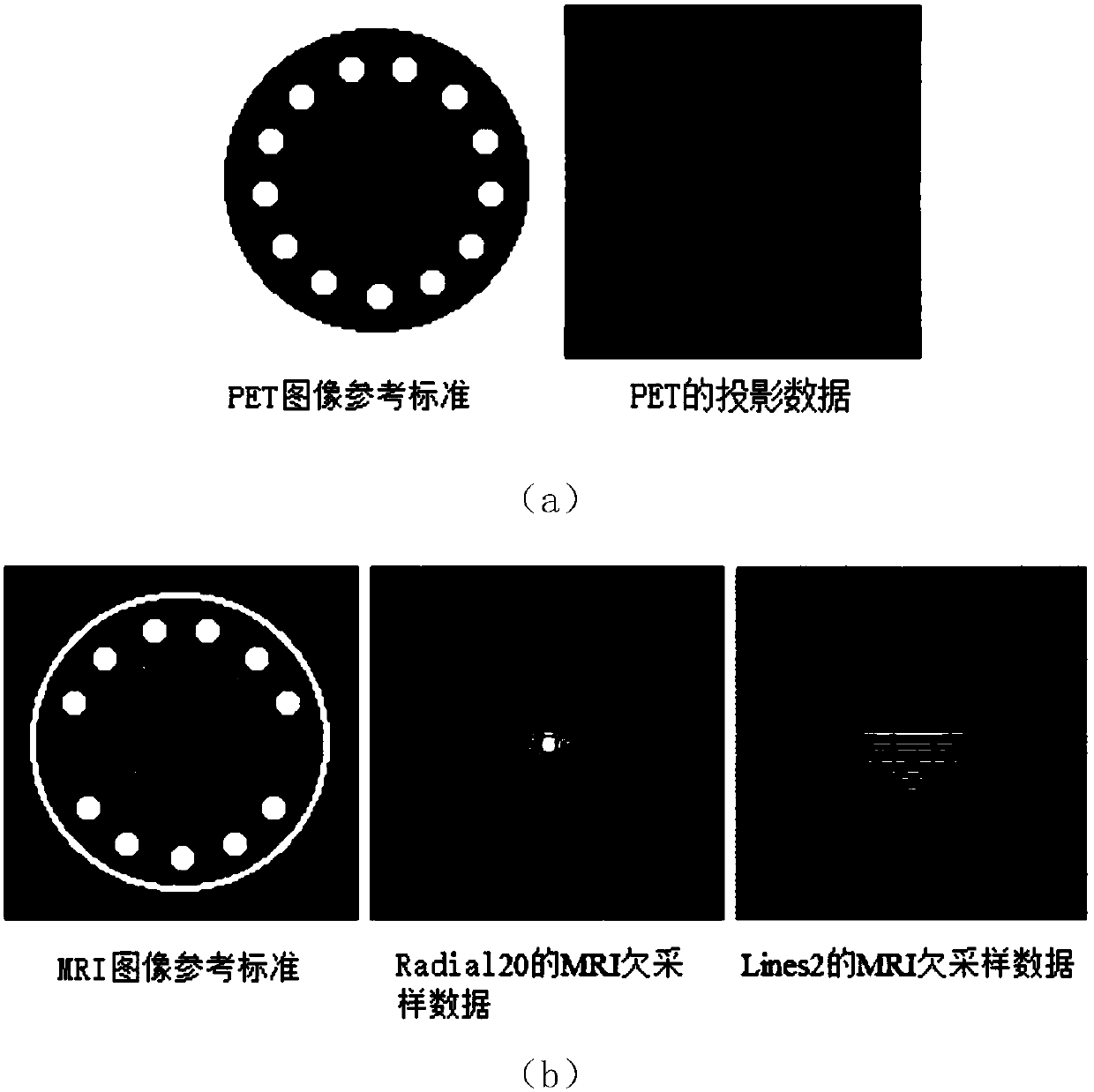PET (Positron Emission Tomography)-MRI (Magnetic Resonance Imaging) maximum posterior joint reconstruction method
A PET-MRI and maximum a posteriori technology, applied in image data processing, complex mathematical operations, instruments, etc., can solve problems affecting image quality, increasing image artifacts, etc.
- Summary
- Abstract
- Description
- Claims
- Application Information
AI Technical Summary
Problems solved by technology
Method used
Image
Examples
Embodiment 1
[0056] A PET-MRI maximum a posteriori joint reconstruction method, such as figure 1 , 2 , 4 and 5, including the following steps in turn:
[0057] Step 1, collecting PET data and MRI data of the subject;
[0058] Step 2, constructing a mathematical statistical model of PET-MRI joint reconstruction through the PET data and MRI data collected in step 1;
[0059] Step 3, in the mathematical statistical model of step 2, use the correlation between the PET image to be reconstructed and the MRI image to be reconstructed to design a cross prior model;
[0060] Step 4, combined with the cross-a priori model of step 3, the maximum a posteriori method is used to jointly reconstruct the mathematical statistical model of step 2, and an optimization equation with a constrained objective function is obtained;
[0061] In step five, iteratively calculate the optimization equation with the constrained objective function obtained in step four, and simultaneously obtain PET reconstructed ima...
Embodiment 2
[0100] A PET-MRI maximum a posteriori joint reconstruction method, other features are the same as in Embodiment 1, the difference is that the acquisition object of this implementation is the brain, PET and MRI reconstructed images such as image 3 and 6 shown.
[0101] In order to verify the effect of the inventive method, Image 6 Shown are brain PET and MRI reconstructed images obtained by joint reconstruction of PET and Spiral20 undersampled MRI data by different methods, with the joint total variation (JTV) and linear level set (LPLS) prior proposed by M.J.Ehrhardt et al. Compared with the images reconstructed by the maximum a posteriori reconstruction method, the PET and MRI images reconstructed by the method of the present invention are clearer, can simultaneously reconstruct PET and MRI images, suppress PET image noise, reduce MRI artifacts, and improve the quantization level of reconstructed images .
[0102] Table 2 shows the optimized parameters α, β, γ, μ u , μ ...
PUM
 Login to View More
Login to View More Abstract
Description
Claims
Application Information
 Login to View More
Login to View More - R&D
- Intellectual Property
- Life Sciences
- Materials
- Tech Scout
- Unparalleled Data Quality
- Higher Quality Content
- 60% Fewer Hallucinations
Browse by: Latest US Patents, China's latest patents, Technical Efficacy Thesaurus, Application Domain, Technology Topic, Popular Technical Reports.
© 2025 PatSnap. All rights reserved.Legal|Privacy policy|Modern Slavery Act Transparency Statement|Sitemap|About US| Contact US: help@patsnap.com



